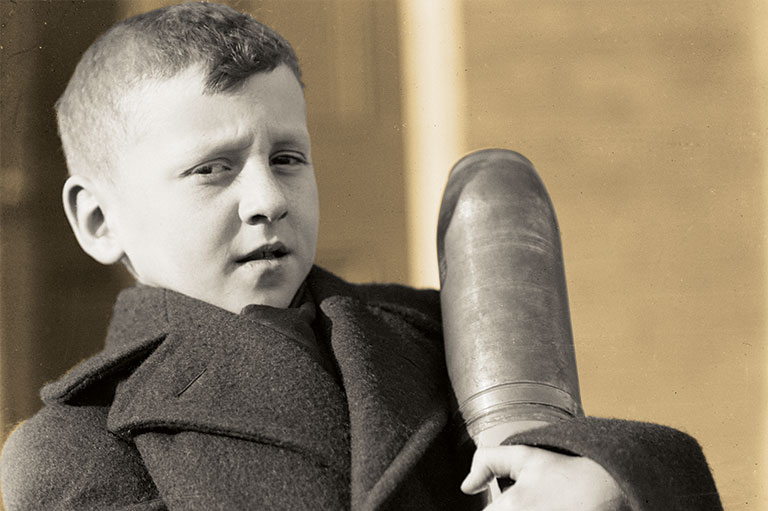After 1918: From Chaos to Mackenzie King!

“Things will never be the same again,” we often say of great and unusual events such as terrorist attacks, depressions, or battles. So it was in 1915, when Prime Minister Robert Borden wrote, “This war is the suicide of civilization.”
In the wake of the First World War, many Canadians thought that much of pre-war civilization might be gone forever.
Entering 1919, more than 60,000 of their finest young men lay dead in Europe, part of a global death toll measured in millions. The spectre of Bolshevik revolution, a bloody reality for tens of millions in Russia, now began to haunt the world. The Paris Peace Conference seemed to create as many problems as it solved.
The Dominion of Canada’s war-born sense of independence was undermined by bitter memories of English-French divisions over recruiting and by deep uncertainty about the future of the weakened British Empire.
From Halifax to Vancouver, a mix of citizen grief, anger, high expectations, and naked opportunism fuelled attacks on traditional social and political institutions. Canada’s political system had been fractured by the conscription debates and bitter election of 1917, and now aggressive farmers’ movements had entered politics with a view to changing the system altogether.
Angry workers were trying to take control of the economy with direct action, culminating in the May-June 1919 General Strike that brought Winnipeg to the brink of violent class warfare. The cost of living continued to spiral upwards, having roughly doubled since 1915, undercutting the security of the middle class. Veterans were unhappy. Business was confused.
Two-thirds of the railway system was bankrupt and had to be nationalized. Social reformers spun out proposals for pensions, health insurance, and a welfare state. Public health workers battled the deadly influenza virus and lectured openly about the perils of venereal disease.
All in all, 1919 was a horrible year; nothing seemed the same.
Contrary to some historians’ beliefs, what seems most striking is how quickly the post-war social turmoil ended and how little lasting impact it had. Although the farmer-sponsored Progressives took sixty-five seats in the 1921 general election and came to govern several provinces, nothing much came of this protest movement and by the mid-1920s it had largely fizzled.
Trade union activity declined, as did inflation, in the hard times immediately after 1920. The failed Winnipeg General Strike set back unions in that city by at least a decade. Serious social change did not come to Canada in the 1920s; for instance, reforms such as medicare and the forty-hour workweek came during or after the Second World War.
Nor did significant political change happen in the 1920s; the war had no effect on the Liberal party’s line of succession. From 1921, the country was governed by the man who had been Sir Wilfrid Laurier’s heir apparent, the uncharismatic, anti-revolutionary William Lyon Mackenzie King. Women voters, enfranchised during the war, did not yet make a difference.
The 1920s roared less loudly in Canada than in the United States, mainly because of our heavier burden of war-related taxes, but most people thought the country had returned to something like normality by 1925. Many tried to forget about the war, the most common reminder being the memorials to Canadian soldiers erected in every town and city.
The serious underlying dislocations that the cataclysm of 1914 to 1918 had helped to create did affect the country and the world in the long term. The Great Depression of the 1930s was a delayed readjustment to the disruption of the global economy caused when the world had gone to war. There is also a strong case for seeing the rise of European fascism and Nazism as products of the “War to End All Wars.”
In this view, the interwar years were only a troubled twenty-year truce before the second, even more destructive, outbreak of fighting. By 1945, Canadians had sacrificed another 40,000 lives — a total of 100,000 altogether — in the great global conflict of the twentieth century. The Second World War did lead to significant social change — namely, the coming of the welfare state. But still we were governed by the slow-to-change Mackenzie King!
The pace and rate of historical change is complicated, continuous, uneven, often exaggerated. On the whole, Canadians are blessed with institutions and a social order that have been unusually stable.
A woman I knew died this year in her ninety-ninth year. She lived her whole life in one of the thousands of Mariposas — the little towns in the sunshine — that make up our country. Her one memory of the Great War was when news came of the death of her brother Charles, a member of the Royal Flying Corps, in 1918.
In the twenty-first century she still felt his loss.
Themes associated with this article
Advertisement
You might also like...

The war that changed Canada forever is reflected here in words and pictures.

Canada’s History Archive, featuring The Beaver, is now available for your browsing and searching pleasure!










